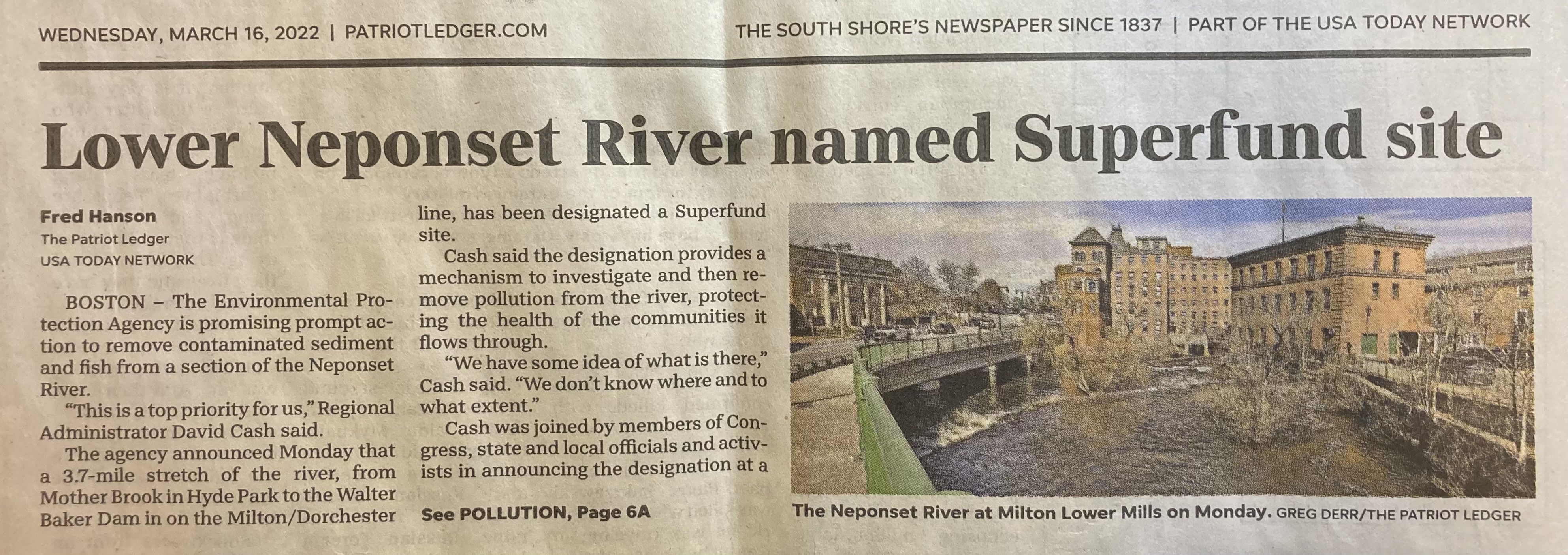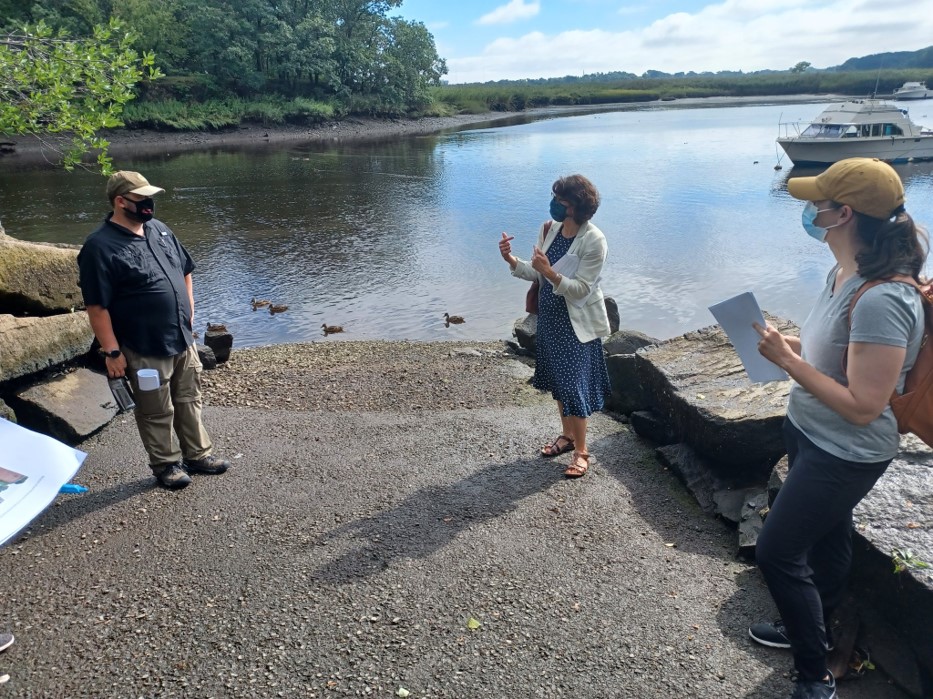- Site Creator and Content Author: Laura Clerx
- Content Author: Conevery Valencius
- Research Contributor: Asa Ackerly
What does it mean to be a river "in time"?
In his work, Brahmaputra Ityadi Padya (The Brahmaputra and Other Poems), the Assamese poet Ajit Barua gave voice to the famous river of Central and South Asia, writing "I am contemporary of all."1 More than 7,000 miles across the globe from the Brahmaputra, another, much smaller river, the Neponset, in present-day Massachusetts (USA, North America), has likewise lived a life both longer and less determinate than a human's, adjusting its existence to new human histories, becoming the contemporary of many different people through time. This project -- A River in Time: Environmental Histories on the Neponset River -- invites participants to engage with the Neponset's many pasts, from its prehuman history through our present moment.
How did this project get started?
The major contaminant in the Neponset are polychlorinated biphenyls (PCBs) chemical contaminants in the sediments at the bottom of the river. The Superfund designation took place in part because people in the local community communicated their support for the EPA's involvement in cleaning up the Neponset, which had been subject to industrial contamination throughout much of the twentieth century. Professor of history Dr. Conevery Bolton Valencius2, one of our project team members, wrote a public comment to the EPA that you can read here. This letter led to a fascinating conversation between Professor Valencius, PhD candidate Laura Clerx, undergrad researcher Asa Ackerly, and EPA staff about the longer histories of the Neponset River.

The summer before the EPA's official designation in March 2022, Dr. Conevery Valencius worked with the nonprofit Primary Source to create a workshop centered around teaching the Environmental History of the Neponset for high school history teachers in the region. In Dr. Valencius' words, environmental history happens when "historians...try to untangle the ways in which the natural world and the buildings and infrastructure we create within it both create and constrain human politics, societies, families, and lives." This approach to history means that "we use a particular site such as the Neponset River to understand human change over time."

Environmental history, then, is also human history. In Dr. Valencius' teaching workshop, the goal was to use the environmental history of the Neponset as a demonstration, showing how the history of one local river can be representative of larger trends in the environmental history of the United States. The idea (and this project embraces this methodological approach) is that telling stories that include our local environments can help us to understand better and anew the histories that have been told about nations and about people, including ourselves.
Both the historical particularity of the Neponset, including the increased attention this particular river is receiving in light of its 2022 Superfund designation, and the possibility of seeing the Neponset as reflective of a larger national environmental history, together served as the catalyst for this digital humanities project.
Notes
- Quoted in Arupjyoti Saikia, The Unquiet River: A Biography of the Brahmaputra (London: Oxford University Press, 2020).
- Narrative text authored by Dr. Conevery Valencius is attributed in the embedded StoryMap in the "Telling Stories" page.